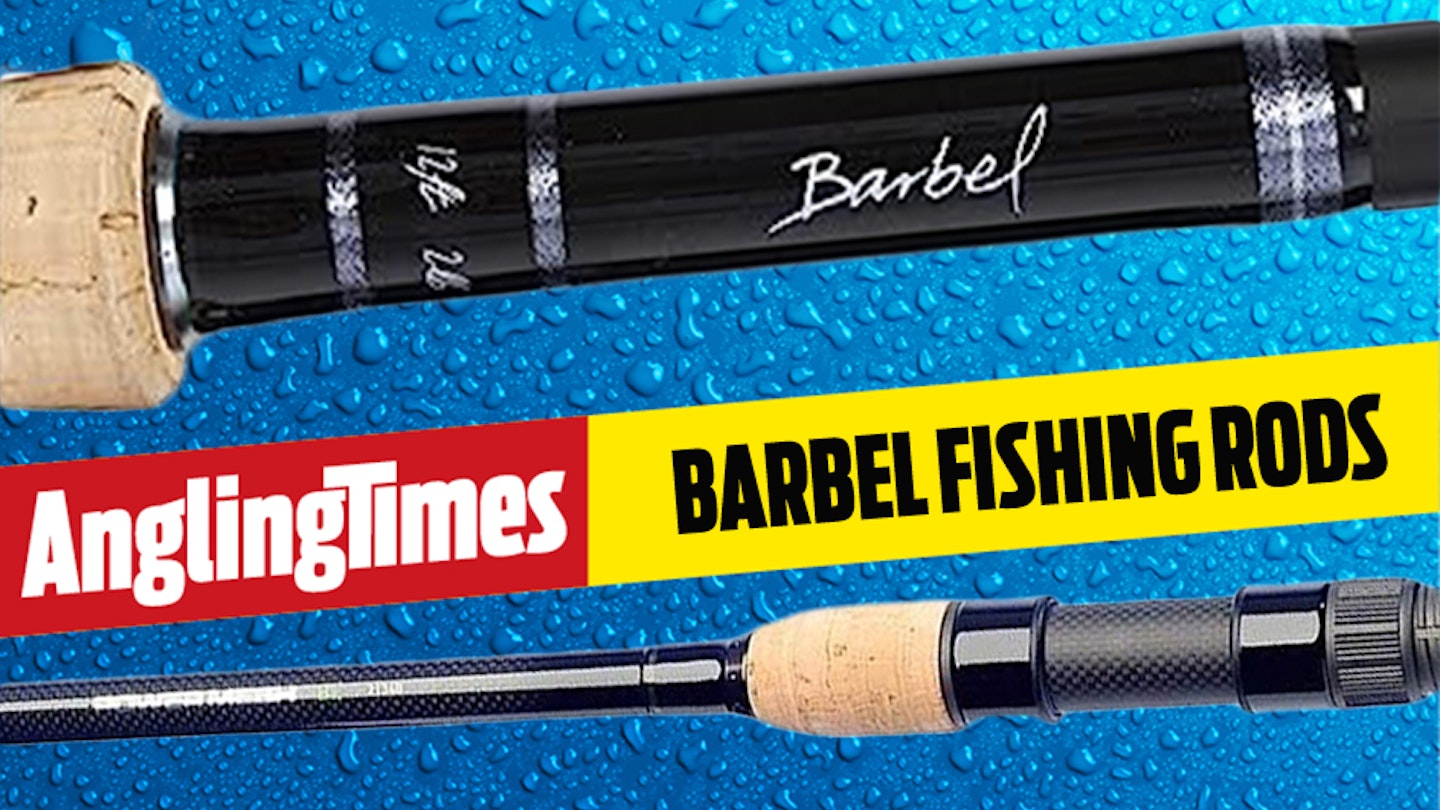Barbel fishing has become an increasingly popular branch of angling, with big fish being more accessible than ever. Now is the time to get out there and catch some of these majestic creatures, but you will need specialised tackle to do so, in particular, one of the best fishing rods for barbel.
Large rivers, like the Trent, require big feeders, long casts and stronger tackle. The smaller chalk streams, however, like the Itchen or Hampshire Avon, require more finesse. On these rivers, you can try a mobile approach, light link leger tactics, freelining or rolling baits through a swim, which will require a much lighter rod that you can easily hold all day.
Best barbel fishing rods at a glance:
• Best In Class Barbel Rod: Daiwa Basia X45 Barbel Rod - View offer on Fishing Tackle & Bait
• Best Specialist Rod: Korum Barbel Rods - View offer on Total Fishing Tackle
• Best Mid-Range Barbel Rod: Guru N-Gauge Specimen Barbel Rod - View offer on Total Fishing Tackle
• Best Float Fishing Barbel Rod: Drennan 15ft Acolyte Specimen Float Rod - View offer on Total Fishing Tackle
• Best Feeder Fishing Barbel Rod: Daiwa Tournament 14ft (280g) SLR BU Feeder Rod -View offer on Total Fishing Tackle
In this guide we look at the best rods capable of handling the demands of barbel fishing and which are suitable for the type of angling you favour. Hit and hold on small rivers, or big chucks into fast flows on larger waterways, there is a rod for everyone below (even beginners to barbel fishing).
Best specialist rod (2023 National Angling Awards winner)
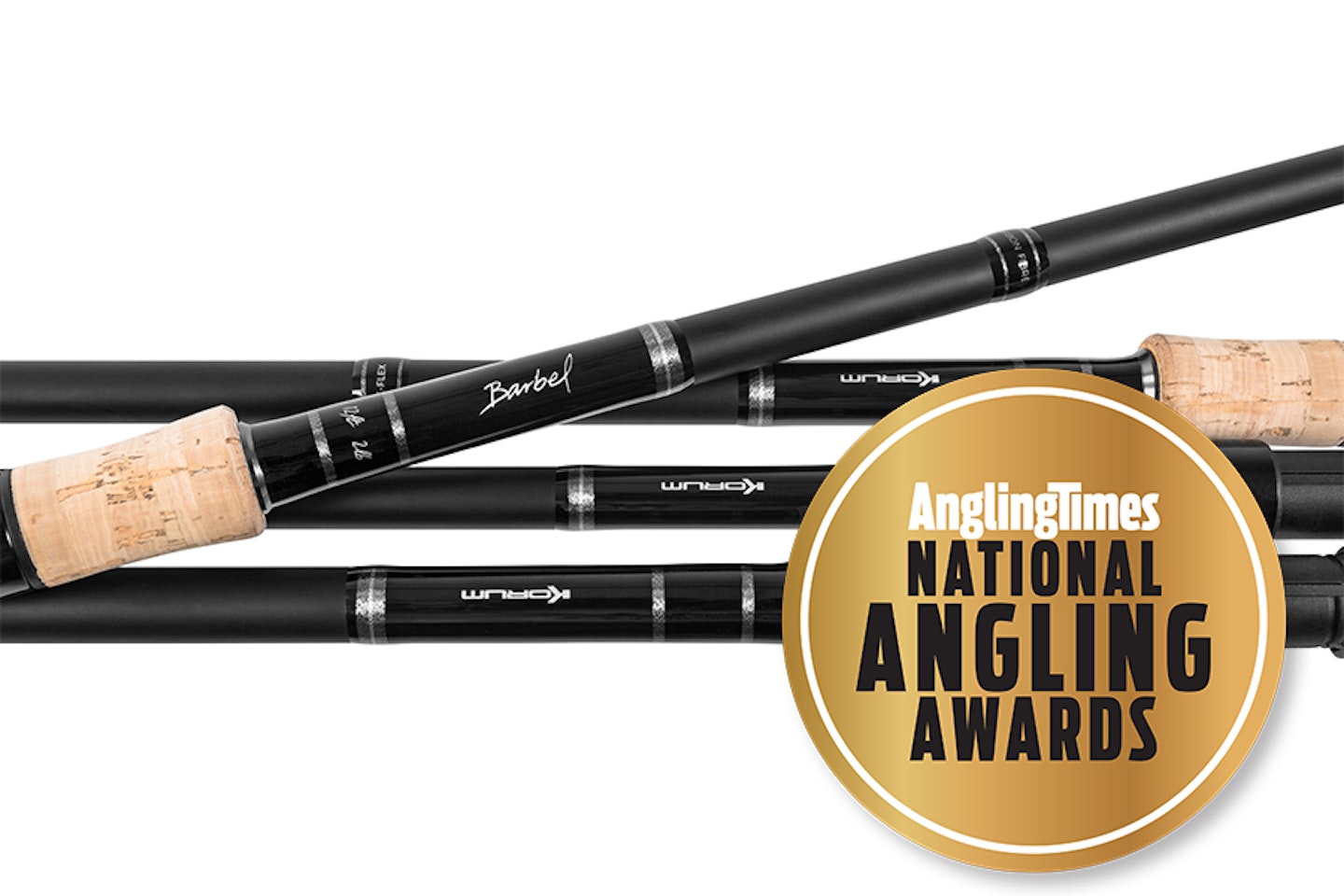
www.total-fishing-tackle.com
The newly updated Korum Barbel rods suit the needs of the modern big-fish river angler, each of the four models comes complete with a white tip for bite detection, tough SiC lined rod guides and slim, full cork handles. All rods feature an anti-frap tip guide and pack down into two equal lengths for easy storage.
Not only do they perform better, they look the part too, with modern styling making them appear way more expensive than they actually are. The 11ft, 1.75lb test curve model is suited to smaller rivers and casting weights up to 5oz, while the longer 12ft option makes the perfect all-rounder.
There’s also a 2lb test curve 12ft model, capable of tackling floodwater with heavier feeders of up to 6oz, while the 2.5lb model is capable of handling the biggest rivers the UK has to offer.
Pros
- Comprehensive range of rods.
- White tip aids bite detection.
Cons
- A 1.5lb model would complete the range.
Best in Class Barbel Rod
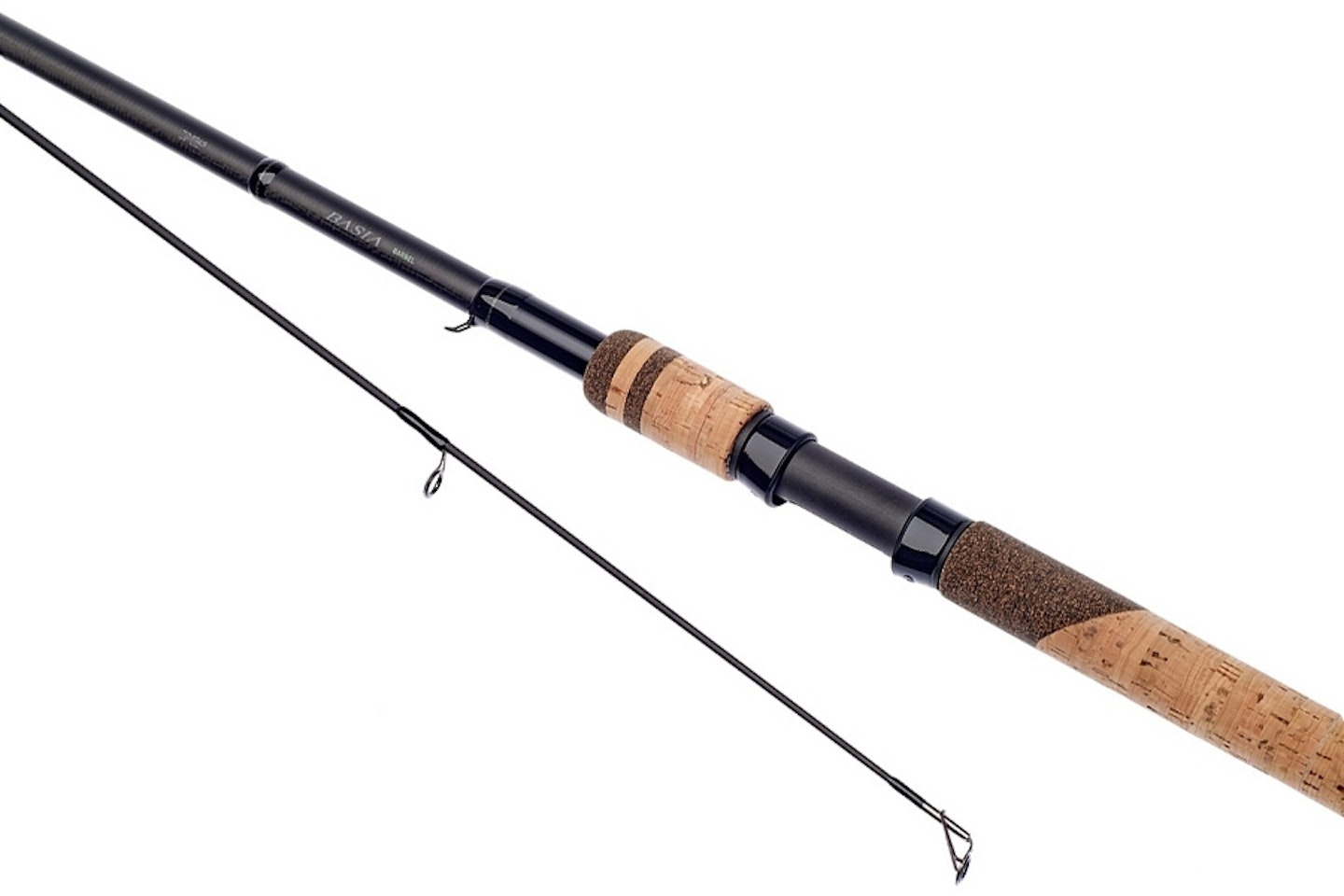
www.fishingtackleandbait.co.uk
If money is no object and you really want the best available, you’ll be hard pushed to find anything better than the Daiwa Basia X45 Barbel rod. A sublime piece of equipment built on the high volume X45 carbon blank makes for an incredibly slim, lightweight rod that, in the 2.75lb version, will cast 5-8oz with ease and precision. The Fuji reel seat allows the rod to bend all the way to the butt cap, utilising all the power available, which, when combined with the armlock handle, helps to subdue even the hardest fighting barbel effortlessly.
The X45 blank is fitted with sea rings with LS guides that are very hardwearing to provide you with a rod that looks fantastic now and will continue to perform for years to come. These rods are also available in 1.75lb and 2.25lb models, both in 12ft.
Pros
- Capable of performing on any UK river.
- Lightweight, powerful and durable.
Cons
- Not as light as some rods.
Best Premium All-round Barbel Rod
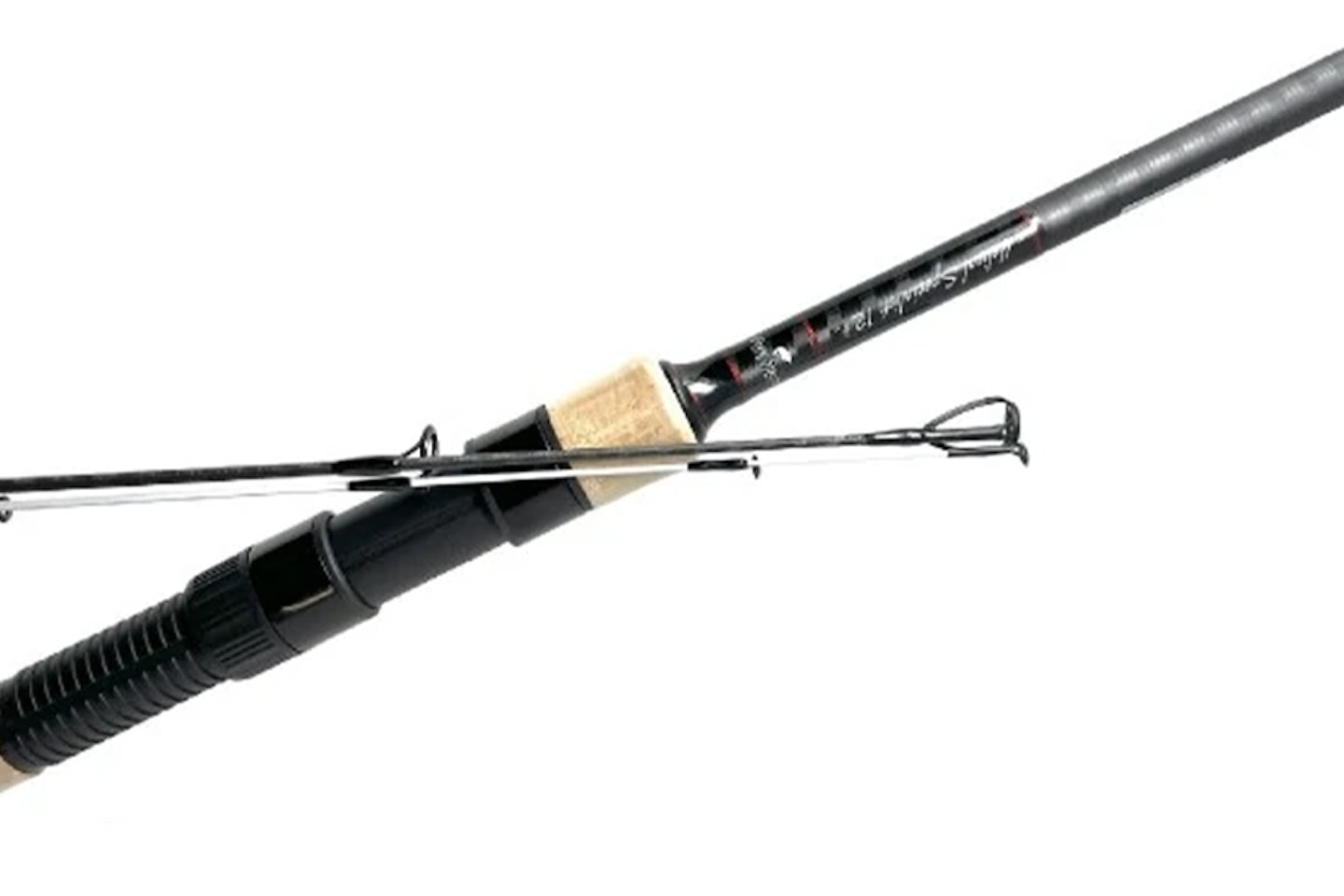
johnsonrosstackle.co.uk
Constructed from the best Japanese carbons and fitted out with super modern black reel seats and matching black framed guides, the Free Spirit Helical Specialist Barbel Twin Tips are some of the most aesthetically pleasing specialist rods we have seen. No paint or lacquer has been added to the blank to ensure the rod will continue to look as good as the day it was bought.
Not just pleasing on the eye, Free Spirit designed this rod to be versatile to offer the angler a rod for a variety of situations. A 1.75lb test curve tip is included for larger baits and powerful rivers, whilst the quiver tip section allows the angler to employ more stealthy tactics such as small feeders or link legers. This is especially useful later in the season when the barbel have seen some pressure, a rod for all seasons.
Pros
- Twin tips included.
- Premium features throughout.
Cons
- Not the best for fishing in really extreme conditions.
Best Big River Barbel Rod

www.total-fishing-tackle.com
Utilising HVF carbon blanks and their patented V-joint system, the 12ft 2.75lb version of the Daiwa Powermesh Barbel rod really is a beast. If you’re looking to cast big feeders or leads (6-8oz) on large, powerful rivers then the Powermesh really is up to the task and will perform excellently in this scenario.
Along with the powerful, progressive blank, a carbon reel seat makes sure your reel will remain locked in place and the stainless sea guides will help aid you’re casting accuracy, even with the heavier mainlines this fishing style demands. A brute of a rod that won’t let you down, whatever the conditions.
Pros
- Super strong and reliable.
- Will cast big feeders with ease.
Cons
- A little too powerful for smaller rivers.
Best Rolling Baits Barbel Rod
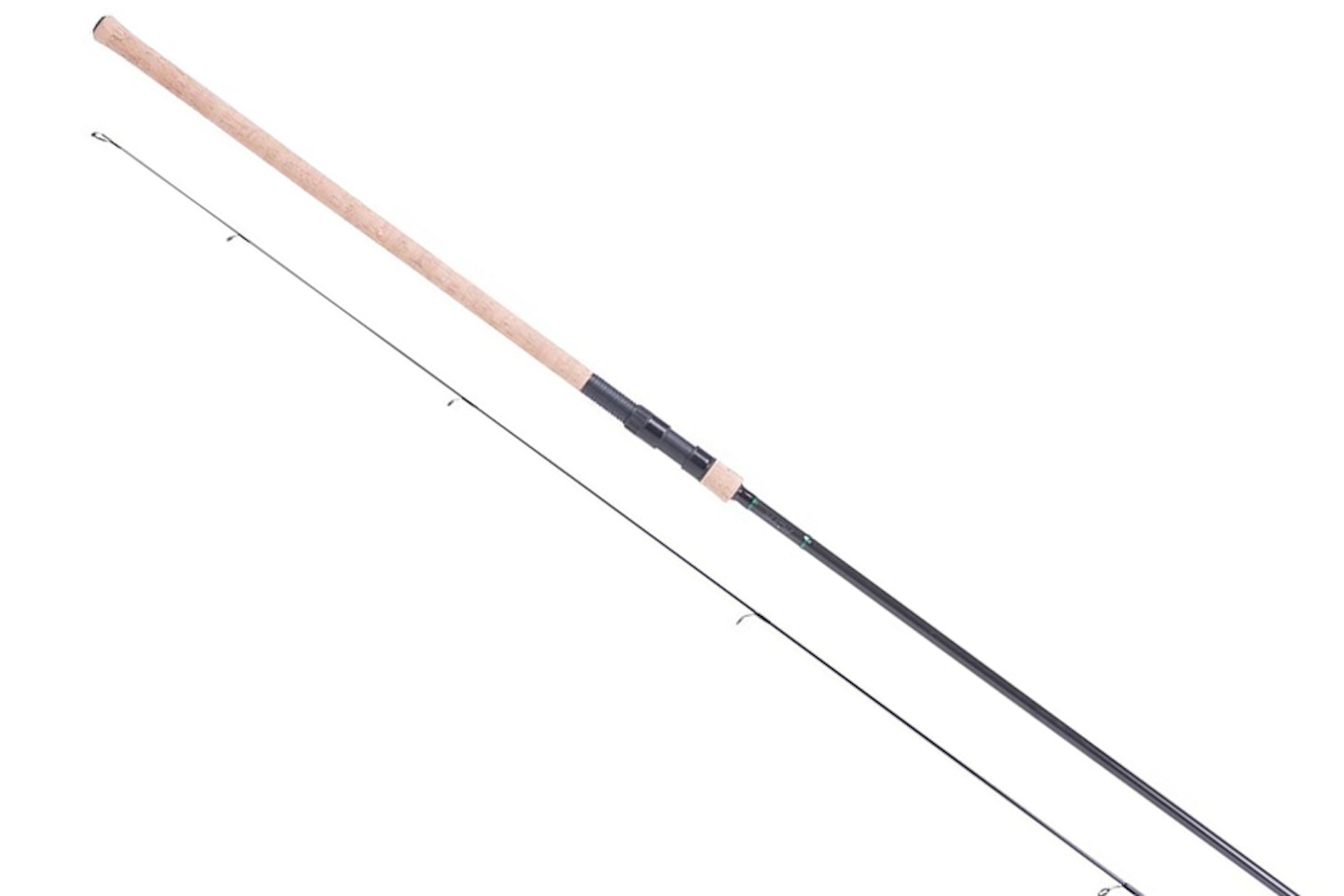
www.total-fishing-tackle.com
Whilst not a dedicated barbel rod, the 12ft, 2.25lb Wychwood FLTR rod is an ideal tool for those who like to stay mobile and use rolling baits. Due to its nature, this rod is designed to be held all day and, as such, has a lovely lightweight blank that’s perfectly balanced…you almost forget you’re holding it at times. With a full cork handle for comfortable grip and a hook ring included, it makes moving around efficient, with a 10ft option available to aid fishing tight swims.
The fast through-action allows a very quick line pick up, which is required when striking out of baits like meat and paste. The sensitive tip allows you to see the bite as soon as it happens, regardless of how gentle it is. A fantastic choice for this style of angling.
Pros
- Fast line pick up.
- Really lightweight, balanced blank.
Cons
- Not designed to cast heavy end tackle.
Best Value Barbel Rod
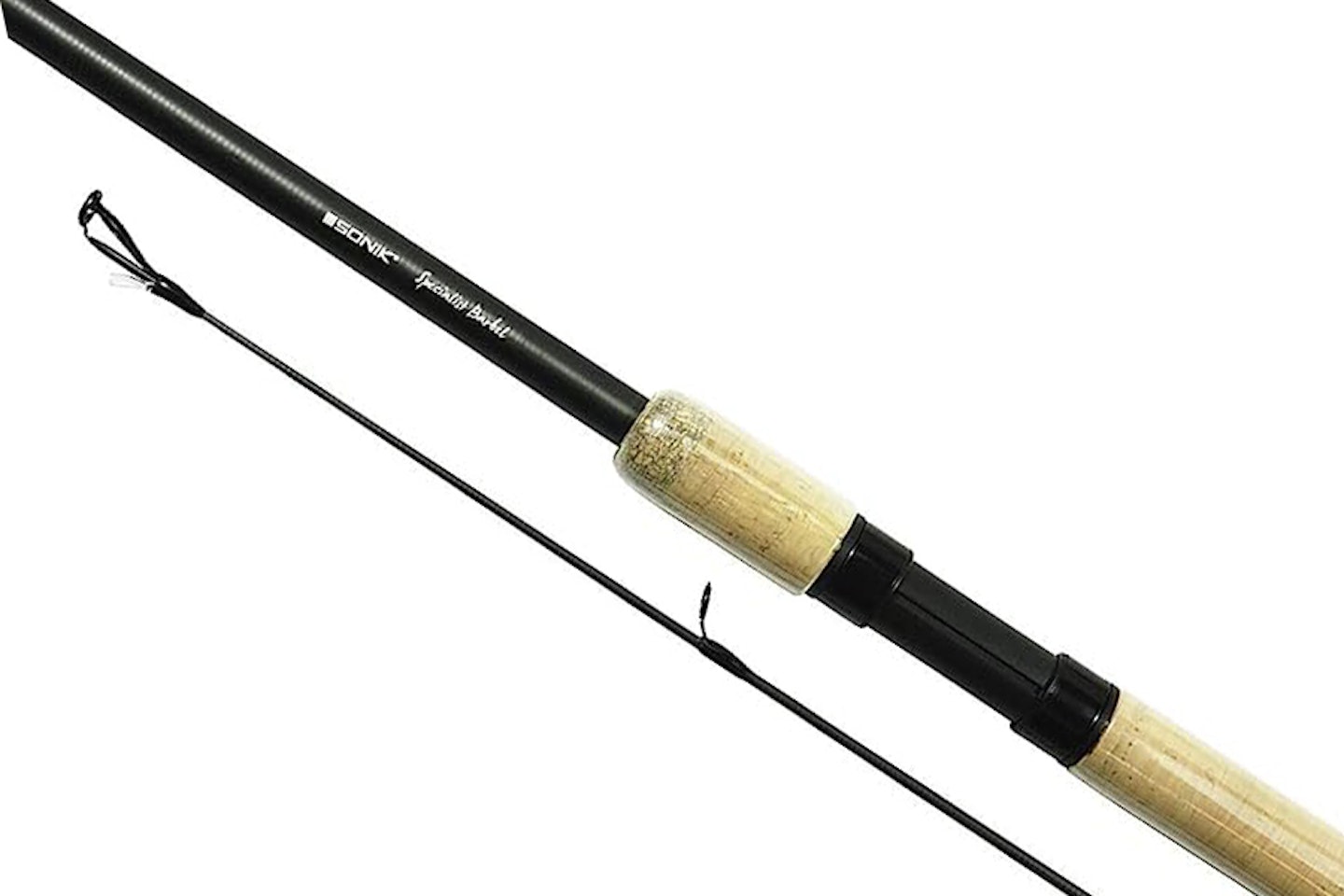
www.ebay.co.uk
There are two 12ft offerings from Sonic in the Specialist Barbel Rods range, a 1.75lb and a 2lb test curve option. The high modulus carbon blanks make for lovely, light, well-balanced rods. Whilst a sensitive tip with plenty of power in the butt section lends this rod to catching and taming even the wariest of barbel.
If you enjoy roving and rolling baits through a swim, the light blank makes this rod a joy to hold all day without tiring your arm, and the sensitive tip emphasises even the slightest of touches to your bait, which can be very important when fish are tentatively feeding. Another interesting feature is the built-in isotope holder in the tip ring, designed to take one isotope for fishing in low-light conditions.
Pros
- Lightweight.
- Very sensitive tip with plenty of power in the blank.
Cons
- Line can get caught around the isotope holder.
Best Mid-Range Barbel Rod
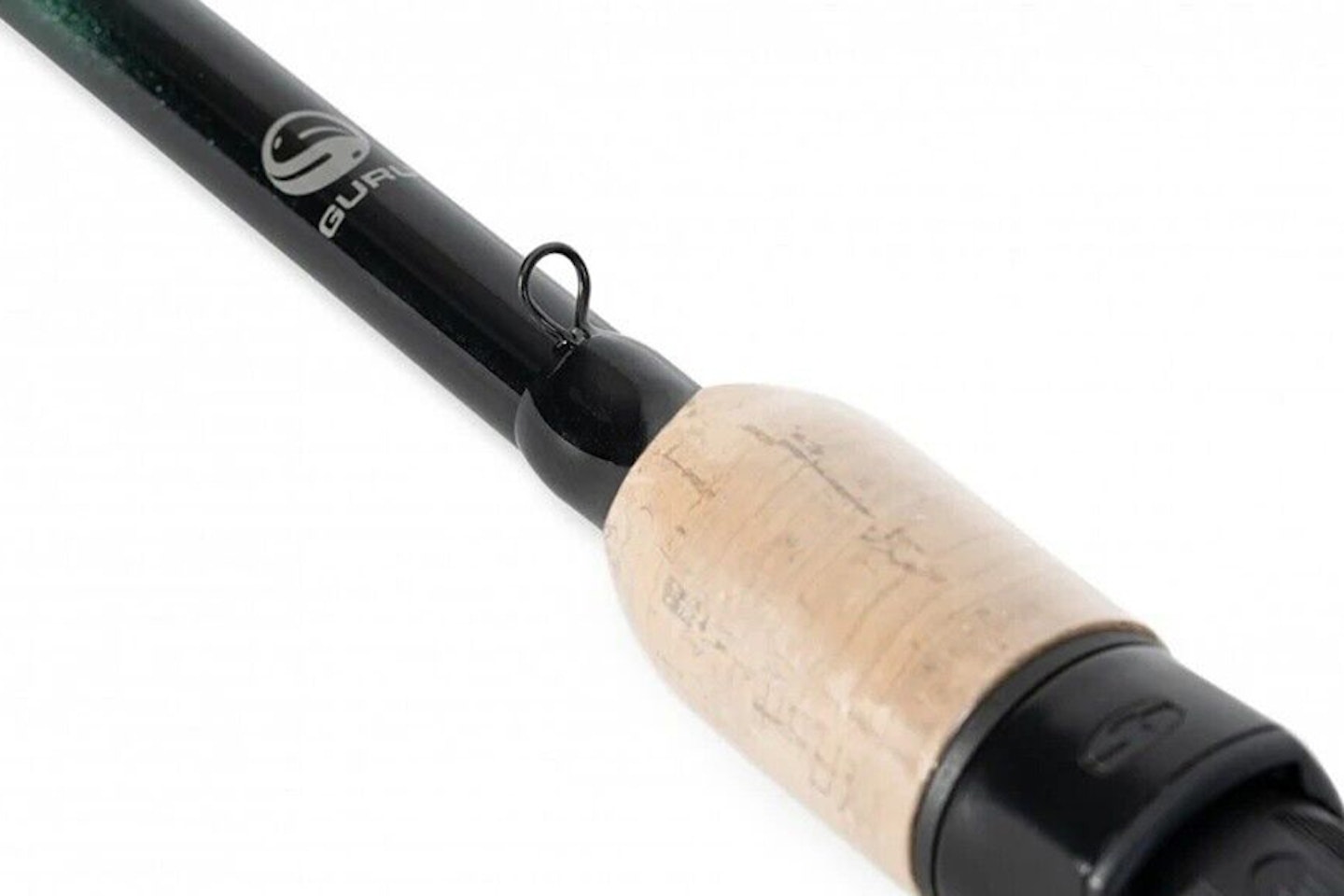
www.total-fishing-tackle.com
The Guru N-Gauge Specimen Barbel Rod has been developed with 30 & 40 Ton tensile strength carbon to create a progressive power action. This allows the rods to bend throughout the whole blank, gaining more power progressively. Simply put, the more the rod bends the more powerful it becomes, perfect for taming all sizes of barbel. The chosen carbon also makes for a much lighter, well-balanced rod that is very comfortable to use and play fish on during those prolonged fights barbel are recognised for.
The 2.25lb TC blank is fitted with SEA-GUIDE anti-tangle guides with minimal zirconia rings, which reduce friction and wrap arounds. All these features aim to make your casting much more effortless, allowing you to cast those big 4-5oz feeders to wherever the fish are laying up.
Pros
- Lovely fish playing action.
- Very comfortable to use.
Cons
- Lacks a bit of power for extreme ranges.
Best Float Fishing Barbel Rod
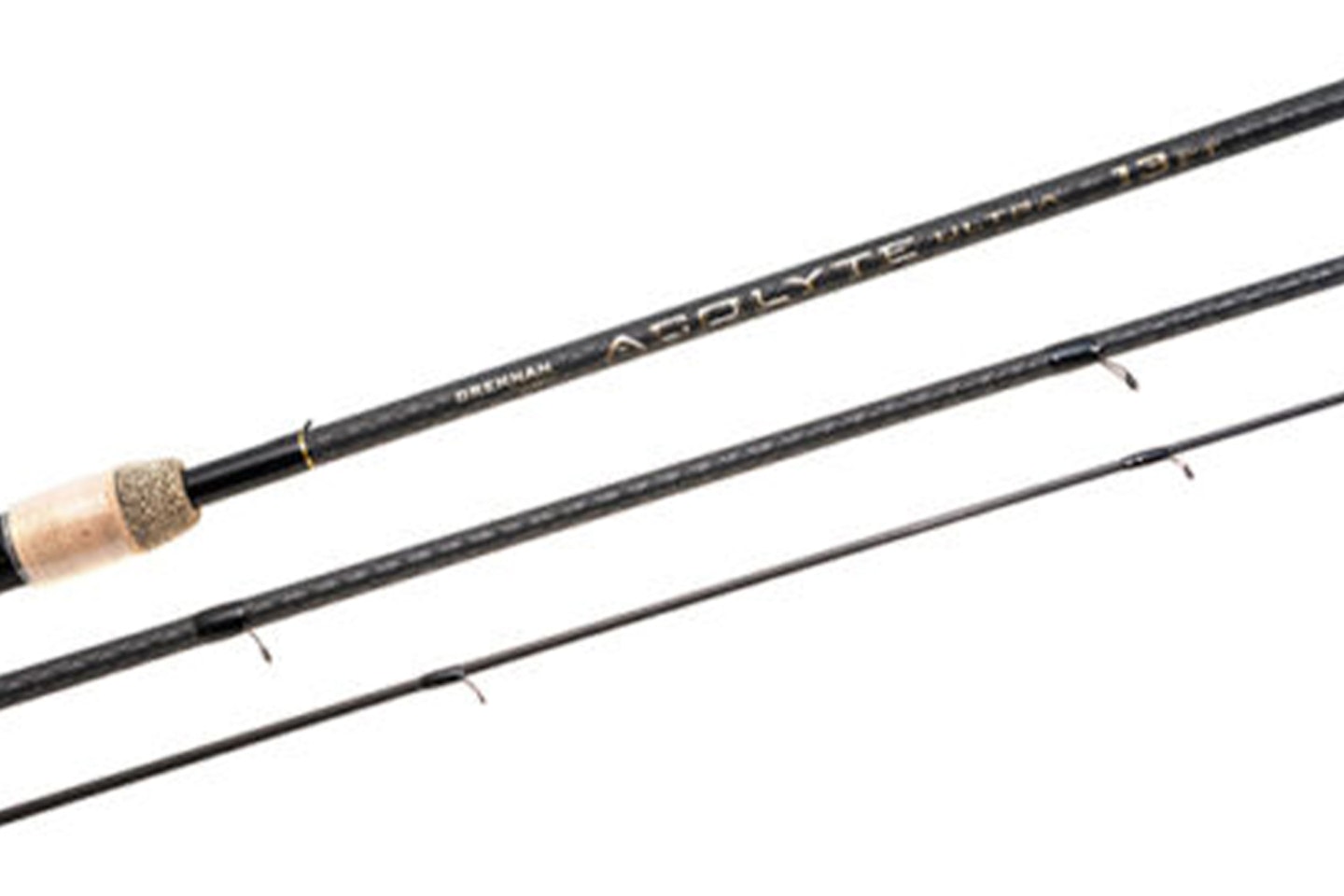
www.total-fishing-tackle.com
The slim, lightweight and exceptionally balanced 15ft Drennan Acolyte Specimen Float rod is ideal for rivers where quality fish are expected. It is slightly more powerful than the 15ft Acolyte Plus and a great choice for casting and controlling heavier floats and baits. A combination of length and a very fast tip ensures line pick up is incredibly fast, allowing you to connect with more bites on those longer trots when seeking out the barbel.
Weighing in at just 170g, it is one of, if not the lightest, long float rods on the market, which makes it effortless to hold and use all day. The Acolyte is also more than powerful enough to suppress even the largest of barbel, so when you do get that bite, you can be more than confident of landing the fish. A superb choice for any float fishing work for specimen fish.
Pros
- Incredibly light and well-balanced.
- Aesthetically beautiful.
Cons
- A little cumbersome on overgrown, smaller rivers.
Best feeder rod for barbel fishing
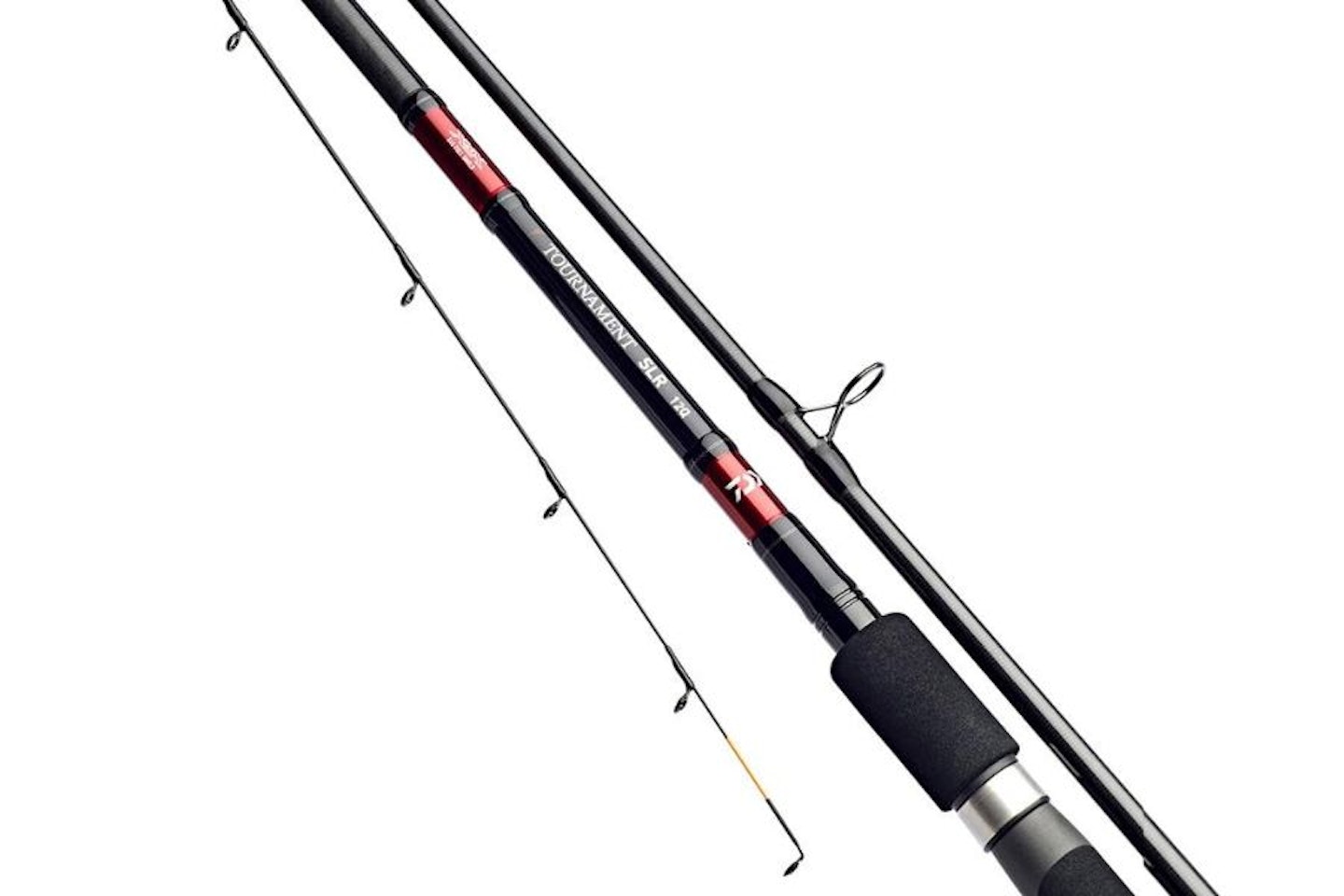
www.total-fishing-tackle.com
The Daiwa Tournament SLR has been hailed as the best feeder rod ever produced, and we can’t help but agree with that assumption.
With 6 variants in the range from 10ft (75g) to a 14ft (280g) offer true versatility.
Its enhanced casting performance comes in the form of Daiwa’s X45X Full Shield and HVF (High Volume Fibre) Nanoplus carbon technologies, this has assisted Daiwa to rework the blank to produce this true casting tool, its biggest benefit is much more accurate casting with greater payloads.
The addition of the SeaGuide TDG lightweight guides to this model, offers reduced friction on the reel line to increase casting distance, combine this with the reworked SLR tips from 2.5oz to 4oz, gives you the ultimate heavyweight distance casting tool.
This makes the Daiwa Tournament SLR the perfect feeder rod for those big fast flowing rivers to search out those big barbel, its more than capable of delivering payloads sufficient to hold in the flow.
Pros
- Incorporates the latest technologies to give the best possible experience
- Offering up to 280g casting weight in 14ft model
Cons
- Very specific, has attributes that lend itself to very specific styles, and wouldn’t be suited as a multi use rod.
What to look for in a barbel rod
With Barbel frequenting such a diverse range of venues that can change so quickly with the weather, the tackle needed to fish for them effectively can vary massively. From casting large feeders and leads out on big, powerful rivers like the Trent and Wye to rolling meat or trotting a float on more intimate rivers like the Hampshire Avon, the rod you choose needs to be up to the task.
If you mainly fish static on large rivers, it's best to go for a rod with some backbone. A barbel rod with a test curve of 2lb+ would be ideal as this will give you the versatility to fish a little lighter when needed, but should there be some extra water on the river and you need to increase the size of your end tackle, the rod can easily cope so you don't have to worry about the changing conditions. It will also provide the extra power needed to guide really big fish against the flow and away from any snags so they can be safely landed.
If you prefer a more roving approach on smaller rivers or enjoy rolling baits like luncheon meat, a big, powerful rod would be very cumbersome, heavy and uncomfortable to use. In this scenario, a lighter rod ranging from 1.25-1.75lb test curve would make the fishing far more enjoyable and not be too overpowering that you can't enjoy the fight. These rods also tend to be much lighter to hold all day, there is nothing worse than holding a heavy rod all day that causes you to fatigue and not fish effectively.
Glossary
Blank: The hollow carbon fibre tube that the rod is made from, attached to which are the guides and handle.
Guides: The rings that line the length of the rod that the line passes through.
Reel Seat: The part of the handle that your reel attaches to. Almost all UK coarse rods have screw-down reel seats, where the fore-grip on the handle rotates and closes the seat to hold the reel in place.
Test Curve: Usually measured in pounds, it's the weight that needs to be applied to the end of the rod to make it bend over 90 degrees. The greater the test curve, the more powerful the rod.
Casting Weight: Depending on the manufacturer, it is either the best suited or maximum total weight in grams that you should cast with your rod. You will normally find your rod will perform best at around half its total casting weight. E.g. a 120g feeder rod best suits a 60g feeder.
Quiver tip: The very top (often brightly coloured) section of a feeder rod, used to identify bites, which bends and 'quivers' when a fish moves off with the bait. Like the test curve of a rod, quiver tips are often rated in test curves measured in ounces.
Fish playing action: A way of describing how good a rod performs when reeling in a fish. A rod with a good fish-playing action will provide plenty of cushion to a thrashing fish, preventing hook pulls (lost fish) and line breakages.
Progressive Action. A rod that quickly powers up from its tip through to its middle area, providing the ideal coordinated playing action for powerful fish.
Tip action: This normally applies to traditional three-piece float rods that need a 'tip or tippy action' to be able to whip out light floats when casting, as well as pick-up line very quickly on the strike.
Through action: A rod that has a softer top section but still produces a cushioned bend throughout its entire length, giving a good fish-playing action.
Parabolic Action: A rod that can bend throughout its length but stiffens towards its butt section, providing a controlled cushioning action when playing a fish.
Rod taper: How a rod changes in diameter along its length. A fast taper rod will typically thicken up very quickly as you move away from the tip. Although other factors come into play, like carbon types, weave and construction, typically, a fast taper rod will bend more at the tip than the butt (tip actioned).
frequently asked questions
Will a rod with a bigger casting weight or test curve rating cast further?
Yes, when combined with extra length, you will be able to achieve greater distances with the correct technique and a weight that matches the rod. Be aware that the more powerful your rod, the stronger the line and hooks you will need to use to prevent fish losses, which could, in turn, mean you fooling less fish into taking your bait to start off with.
Should I choose a cork or EVA handled rod?
This all comes down to personal preference. Cork is lightweight, transmits more feeling to your hands when playing a fish and looks great. EVA, however, is cheaper and more durable. Many rods have an abbreviated or combined cork/EVA handle, with the material best suited to a particular part of the handle used to give the best of both worlds.
Should I choose a rod that will cast the furthest distance that I will want to fish?
No, you should choose a rod that best suits the distance that you want to fish at. A rod that is too long and powerful will make casting short distances with any kind of accuracy difficult and will have a poor fish playing action. This is why all rod ranges feature models of varying lengths and powers.
Can I use the same rod for both float a feeder fishing?
Not generally, no. Barbel rods are designed to be much more powerful and, therefore, heavier, making them very cumbersome to hold all day. They also have a poor line pick up speed, making them very difficult and inefficient to use for float fishing.
What are rod test curves and what do they mean?
Quite simply it is the weight required to pull a rod tip to a 90-degree angle to the rod butt when the rod is held in an upright position. They can also be used as a rough rule-of-thumb guide for the rod's weight casting potential.
Why are some of the rods so stiff?
Some of the more powerful rods are designed to be stiff to reduce recoil and improve their recovery rate to aid casting a long way. With the minimal amount of tip movement after casting, friction is reduced which prevents the line slowing down the cast, allowing for further casting.
What is the best rod to buy for barbel fishing?
Unfortunately, there is no one-size-fits-all rod due to the varying methods and environments barbel can be found in. Some rivers require stealth and finesse, whilst others require a much more aggressive approach, with heavy baiting and big feeders. It is best to ask yourself what type of situation you will be fishing the most. If your venue responds to roving around rolling baits, there is little point you buying an expensive rod that is heavy and will make holding it all day impractical. Conversely, a lighter rod will be little use at casting large feeders into a strong current on large rivers like the Trent.
Author Aidan Bordiuk is an enthusiastic angler who enjoys all fishing disciplines from match fishing to beach casting. He is currently occupying the position of Commercial Content Writer at Angling Times.
